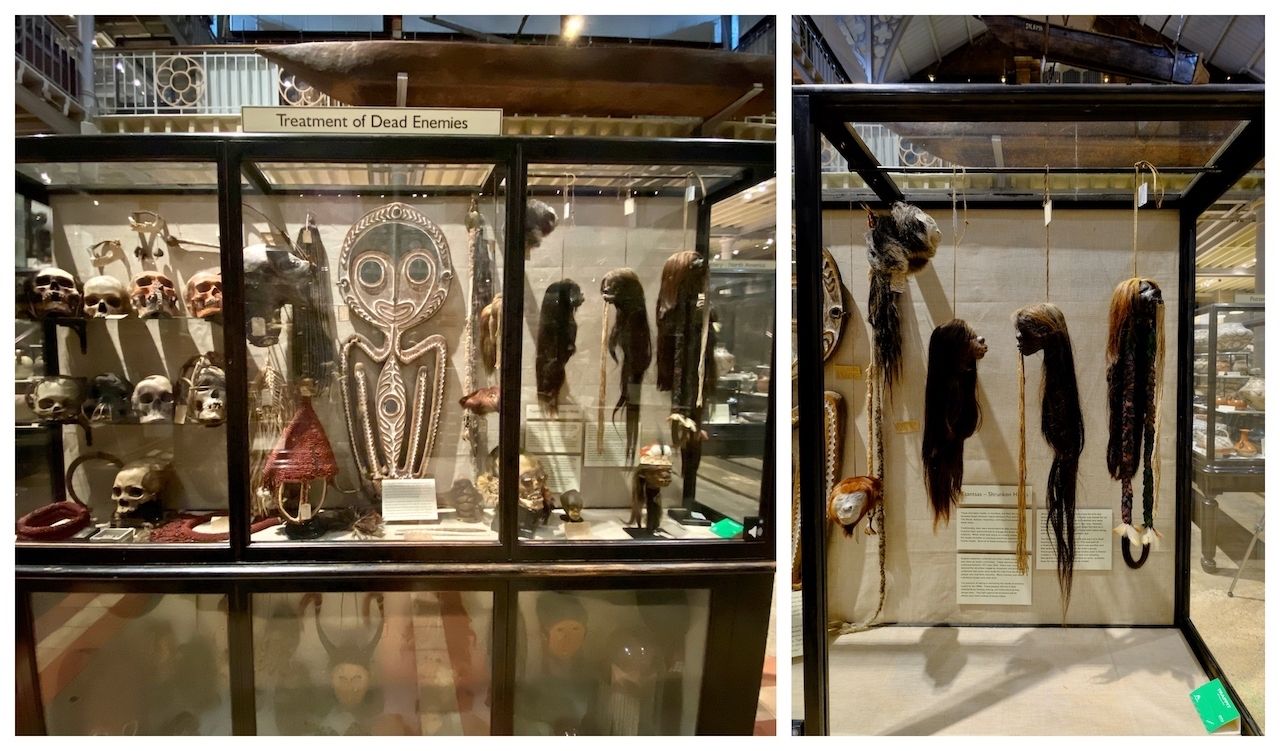After 80 years on display, Oxford’s Pitt Rivers Museum has removed several tsantsa, or “shrunken heads,” from display. Although the tsansa have been very popular artifacts with visitors, when the museum reopens on September 22, they will be moved and will not be available for public viewing until further notice.

Photo: Hugh Warwick + Pitt Rivers Museum, University of Oxford
The tsantsas were made by the Shuar and Achuar people of Ecuador and South America. The heads of dead male enemies were taken and preserved so the Shuar and Achuar could acquire the powers living within the souls of their fallen foes.
